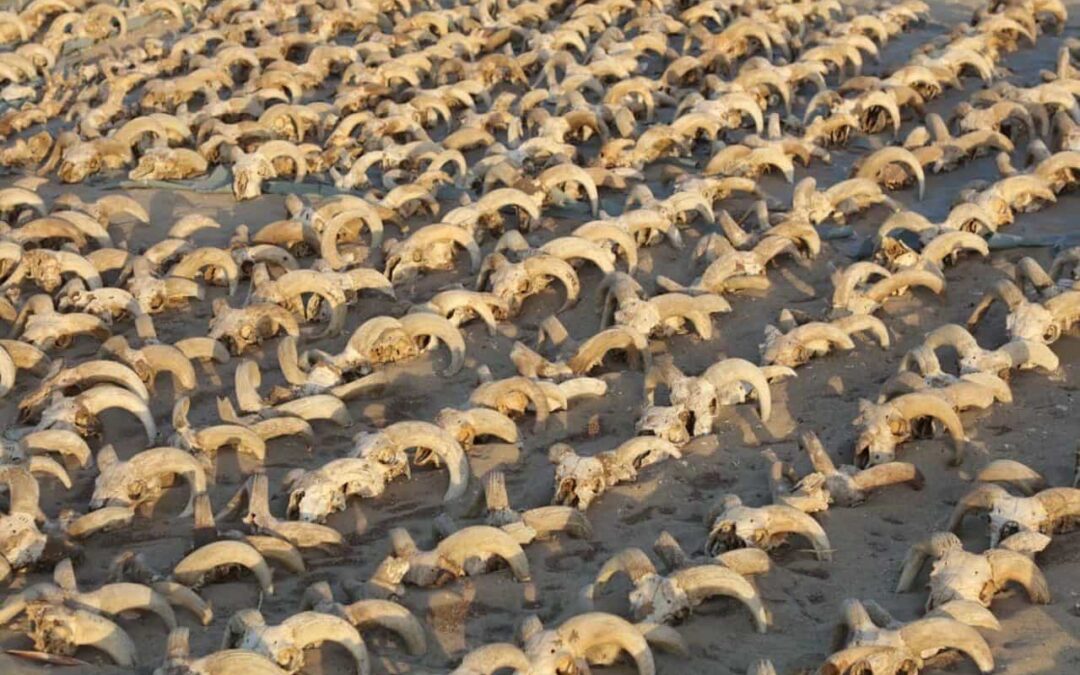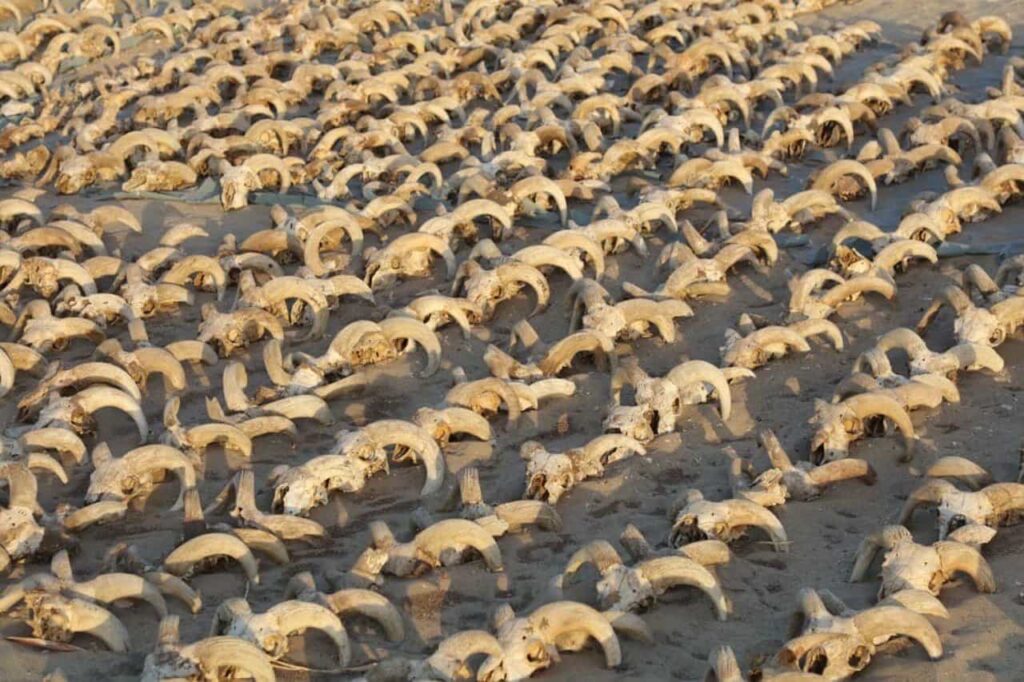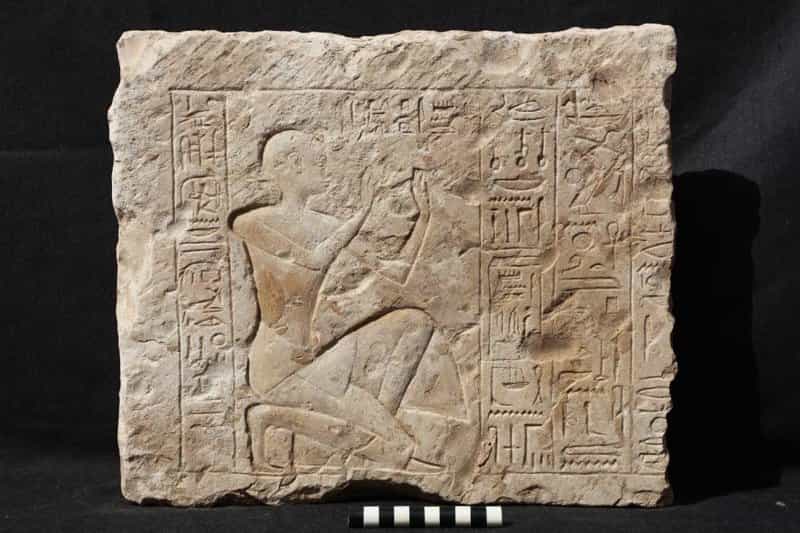
Abydos was one of the primary religious centers of ancient Egypt. According to tradition, it was the location of the tomb of Osiris, the god of resurrection, Nile regeneration, and fertility.
Abydos is situated around 170 kilometers north of ancient Thebes and 480 kilometers south of present-day Cairo. Thousands of pilgrims from all over the country came to this sacred site to honor the lord of the afterlife during the festivities held in his honor.
Thus, Seti I (1290-1279 BC), the second pharaoh of the 19th dynasty, knew precisely what he was doing when he chose this place to build his magnificent mortuary temple. In reality, both the temple and the location chosen by the sovereign reflect the desire to reinforce his legitimacy, given that neither his father, Ramses I, a general who was the successor of Pharaoh Horemheb, nor his mother, Sitre, were of royal blood.
Seti I believed that by erecting his mortuary temple in such a sacred place, he associated his name with that of Osiris, one of the most important gods in the pantheon, and whose cult was among the oldest in ancient Egypt.
Ram’s Heads as an Offering
In this location, which was so sacred to the ancient Egyptians, an archaeological mission from the University of New York excavating the temple that Pharaoh Ramses II, son of Seti I, built in Abydos (one kilometer from the temple erected by his father) has made an incredible discovery: more than 2,000 rams’ heads with their antlers dating from the Ptolemaic period (332-30 BC), as well as a huge building erected in the Old Kingdom, specifically during the 6th Dynasty (2305-2118 BC), according to a statement by the Egyptian Ministry of Tourism and Antiquities.
“This discovery reveals important details about the life and history of the temple of Ramses II in Abydos and its surrounding area, which greatly contributes to understanding this site and the life it supported for more than two thousand years,” said Mustafa Waziri, Secretary General of the Supreme Council of Antiquities of Egypt.
Although this has not been the only finding that archaeologists have made here. In one of the newly discovered rooms in the northern area of the Ramses temple, more mummified animal remains have been found, including a group of sheep, dogs, wild goats, cows, deer, and mongoose.
A “Different” Building
But why were such a significant number of mummified rams arranged in this place? The person in charge of the mission, Sameh Iskandar, has indicated that it could be because these animals were placed here as an offering, something “unprecedented in Abydos during the Ptolemaic era,” declared the surprised archaeologist. Iskandar also pointed out that this finding would indicate that the cult of Pharaoh Ramses II remained present in Abydos even a thousand years after his death.
Another notable discovery in this area of Abydos has been a huge construction from the 6th dynasty characterized by “a different and unique architectural design” since it has thick walls five meters wide.
“This building will contribute powerfully to the reconsideration of the activities and architecture of the Old Kingdom in Abydos, long before the construction of the temple of Ramses II,” said Iskander.
A New Vision of the Temple of Ramses II
On the other hand, Mohamed Abdel Badi, head of the Central Administration for Antiquities of Upper Egypt of the Supreme Council of Antiquities, pointed out that the mission has also documented parts of the northern wall of the wall surrounding the temple and its annexes. Badi considers this finding “changes what had been established about the design of the temple of Ramses II and everything that was described, drawn, and circulated among scientists and researchers since its discovery more than 150 years ago.”

Detail of one of the mummified ram heads found at Abydos. Egyptian Ministry of Tourism and Antiquities

Panoramic of the more than two thousand ram heads found during excavations in the temple of Ramses II in Abydos. Egyptian Ministry of Tourism and Antiquities

Some of the items discovered during the season of excavations at Abydos. Egyptian Ministry of Tourism and Antiquities

Remains of the 6th Dynasty building discovered in Abydos. Egyptian Ministry of Tourism and Antiquities

Relief located during the excavations that are being carried out in Abydos. Egyptian Ministry of Tourism and Antiquities
News
Unveiling the Ingenious Engineering of the Inca Civilization: The Mystery of the Drill Holes at the Door of the Moon Temple in Qorikancha – How Were They Made? What Tools Were Used? What Secrets Do They Hold About Inca Technology? And What Does Their Discovery Mean for Our Understanding of Ancient Construction Methods?
In the heart of Cusco, Peru, nestled within the ancient Qorikancha complex, lies a fascinating testament to the advanced engineering prowess of the Inca civilization. Here, archaeologists have uncovered meticulously angled drill holes adorning the stone walls of the Door…
Unveiling the Sun Stone: Aztec Relic from the Reign of Moctezuma II (1502-1520) – What Secrets Does It Hold? How Was It Used? What Symbolism Does It Carry? And What Does Its Discovery Reveal About Aztec Culture?
In the heart of Mexico City, amidst the bustling Plaza Mayor, lies a silent sentinel of ancient wisdom and artistry – the Sun Stone. This awe-inspiring artifact, dating back to the reign of Moctezuma II in the early 16th century,…
Uncovering the Past: Rare 1,000-Year-Old Copper Arrowhead Found – Who Crafted It? What Was Its Purpose? How Did It End Up Preserved for So Long? And What Insights Does It Offer into Ancient Societies?
In the realm of archaeology, every discovery has the potential to shed light on our shared human history. Recently, a remarkable find has captured the attention of researchers and enthusiasts alike – a rare, 1,000-year-old copper arrowhead. This ancient artifact…
Unveiling History: The Discovery of an Old Sword in Wisła, Poland – What Secrets Does It Hold? Who Owned It? How Did It End Up There? And What Does Its Discovery Mean for Our Understanding of the Past?
In a remarkable archaeological find that has captured the imagination of historians and enthusiasts alike, an old sword dating back to the 9th-10th century AD has been unearthed in Wisła (Vistula River) near Włocławek, Poland. This discovery sheds light on the rich…
Unveiling the Hidden Riches: Discovering the Treasure Trove of a Notorious Pirate – Who Was the Pirate? Where Was the Treasure Found? What Historical Insights Does It Reveal? And What Challenges Await Those Who Seek to Uncover Its Secrets?
A group of divers said on May 7 that they had found the treasure of the infamous Scottish pirate William Kidd off the coast of Madagascar. Diver Barry Clifford and his team from Massachusetts – USA went to Madagascar and…
Excavation Update: Archaeologists Unearth Massive Cache of Unopened Sarcophagi Dating Back 2,500 Years at Saqqara – What Secrets Do These Ancient Tombs Hold? How Will They Shed Light on Ancient Egyptian Burial Practices? What Mysteries Await Inside? And Why Were They Buried Untouched for Millennia?
Egypt has unearthed another trove of ancient coffins in the vast Saqqara necropolis south of Cairo, announcing the discovery of more than 80 sarcophagi. The Tourism and Antiquities Ministry said in a statement that archaeologists had found the collection of colourful, sealed caskets which were…
End of content
No more pages to load











